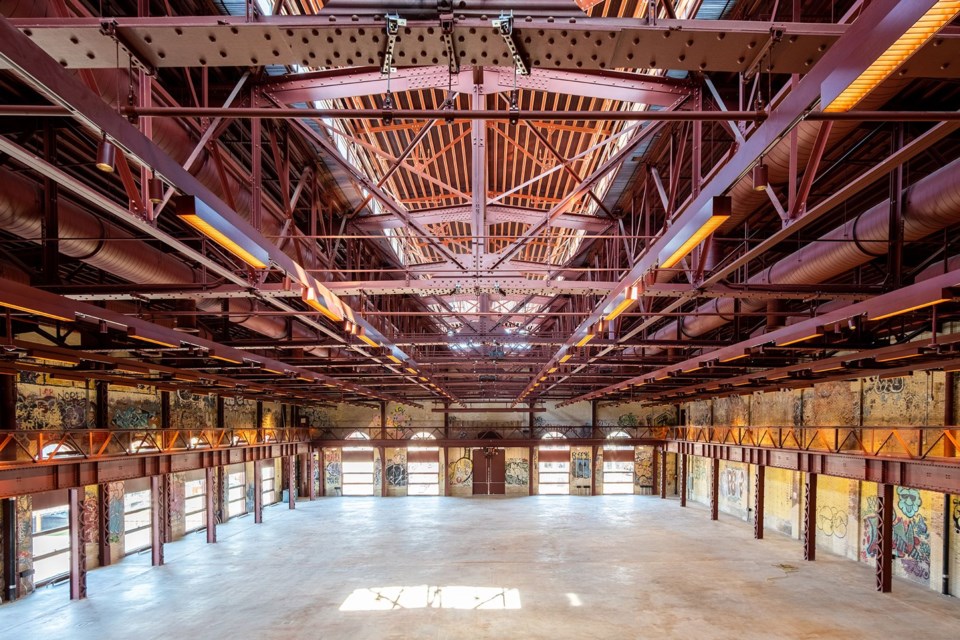The New York Landmarks Conservancy announced the winners of the 2024 Lucy G. Moses Preservation Awards, the agency's highest honors for excellence in preservation. This year, Brooklyn is home to four award-winners.
Powerhouse Arts at 322 Third Avenue in Brooklyn; 75th Police Precinct Station on 486 Liberty Avenue, Brooklyn; Ridges Residences in Stuyvesant Heights, Brooklyn, and Saint John the Baptist Roman Catholic Church at 333 Hart Street in Brooklyn will receive the Awards at a ceremony on April 10 at The Plaza Hotel. The ceremony attracts an audience of more than 500 every year, according to a news release.
“The ‘Lucy’s’ are a joyous celebration of impressive preservation work occurring throughout the City,” said Peg Breen, President of the New York Landmarks Conservancy. “This is our largest and liveliest gathering.”
Powerhouse Arts
A massive former power station along the Gowanus Canal, once deteriorated and covered in graffiti, has been converted into a dynamic arts and culture center. The award-winning project reflects how Gowanus itself has evolved from an industrial hub, to a brownfield site, to a thriving community.
The interior holds a 170,000 square foot art fabrication facility for large scale art production in metal, wood, ceramic, textiles, and printmaking, as well as stunning public galleries and event spaces. The Powerhouse shows how preservation not only saves buildings but can contribute to elevating a structure to a new public-facing industrial use that enriches the cultural, environmental, and recreational resources of Gowanus and New York City.
75th Police Precinct Station
The transformation of this abandoned 1892 police precinct building in East New York is extraordinary, the agency said. Once on the verge of demolition, the fantastic façade was returned to its former glory and the building now provides shelter for formerly homeless men. The project demonstrates how preservation contributes to communities and helps address the City’s housing shortage.
Ridges Residences
The pair of brick houses was built in 1919 in a Spanish Renaissance style not typical for Stuyvesant Heights. Two generations of the Ridges family have lived there for decades.
The project began with a series of issues around the buildings. Severe cracks had emerged at the façade and along the roof parapet. The front facades and brick terraces showed signs of masonry buckling. The roofing systems and windows needed to be replaced. As work began, and the houses were opened up, new and unexpected conditions presented themselves. Although it was a daunting prospect, the owners completed this comprehensive restoration, working with preservation architect Michelle Todd, M. Todd Architect, LLC, and preservation engineer Silman, to ensure the best outcome.
Saint John the Baptist Roman Catholic Church
This massive church was built in 1888-94 as the jewel of St. John’s University’s first home in Brooklyn. It was designed in a Romanesque Revival style by pre-eminent religious property architect Patrick Keely.
Saint John the Baptist fills the bulk of a Bedford Stuyvesant square block, 205 feet long by 106 feet wide. The building had never been restored and was in extremely poor condition, with leaks at the roofs, rusty and decayed sheet metal elements, boarded-up windows, and rotted wood window frames. The tremendous size magnified the problems: the deteriorated exterior can be seen for blocks, and the interior was difficult for the congregation to manage.
Zaskorski and Associates Architects worked with the Diocese of Brooklyn to complete this project, over 11 years. The work has dramatically improved the entire façade. All stonework was cleaned, and repaired, and repointed. There are new roofs. An eye-catching eight-foot tall decorative frieze that runs along the entire building as well as the cornices, gables, pinnacles, and gutters, were replaced in lead-coated copper, exactly matching the original. The stained-glass windows were restored with new hard wood outer frames and new protective glazing. The 22-foot diameter rose window which could not be restored, was replaced, using laser-cut, solid mahogany components to replicate the historic design. Now that the building envelope is dry and secure, the parish can turn its attention on restoring the interior.




